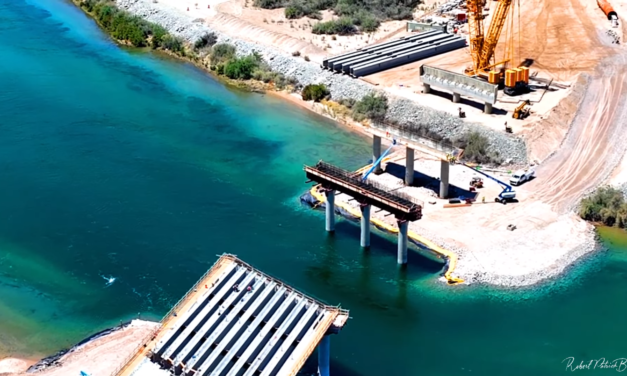ARIZONA — An investigation spearheaded by Arizona Attorney General Kris Mayes into the potential environmental and public health risks posed by lead-covered cables has recently garnered significant attention. This inquiry was prompted by alarming reports suggesting that these cables, used historically by telecommunication companies, might be present throughout Arizona and other parts of the United States, posing a serious threat to soil and groundwater quality.
The issue of lead-contaminated cables emerged into the public consciousness following an extensive investigation by the Wall Street Journal. This probe uncovered that thousands of old, lead-covered cables, abandoned by major telecom companies, have been deteriorating for decades, leading to lead contamination in various environments. This revelation sparked a series of responses from governmental and regulatory bodies, including the office of the Arizona Attorney General and the U.S. Environmental Protection Agency (EPA).
Attorney General Mayes’ decision to launch an investigation underscores the gravity of the situation. The inquiry aims to identify the extent of the problem within Arizona and ascertain the potential risks to public health and the environment. Mayes emphasized the critical nature of this investigation, stating, “Ensuring the health and safety of Arizonans is one of my top priorities.” The Attorney General’s Office has sent letters to over 200 telecommunications operators, including prominent companies like Verizon, AT&T, and CenturyLink, requesting comprehensive information on any lead-covered cables they may own. The responses from these companies are expected to provide crucial data on the type, location, and length of these cables, whether they are aerial, underground, or underwater.
One specific instance identified by the Attorney General’s Office involves a lead-covered cable traversing the Colorado River from Nevada into Mohave County, originally placed by Bell Telephone Company in 1949. This case highlights the long-standing nature of the problem and the potential risks to crucial water sources. The telecom operators have been given a 30-day deadline to respond with the requested details.
The Wall Street Journal’s investigation played a pivotal role in bringing this issue to light. The investigation found that lead from at least 2,000 old cables, both underground and overhead, has been degrading over time, contaminating water and soil in communities across the U.S. These findings were supported by tests conducted on lead levels in sediment and soil at several locations, revealing contamination near playgrounds, schools, and major waterways. In one shocking instance, a sample from Lake Tahoe showed lead levels 2,533 times the EPA limit for drinking water. This discovery is particularly concerning given the historical efforts to eliminate lead from homes and water lines, while lead-coated phone cables have remained largely unaddressed.
The EPA’s reaction to these findings was to request further information from AT&T and Verizon regarding the risks posed by these lead-clad telecom cables. While AT&T maintained that they have no reason to believe the cables pose public health risks, they have pledged to collaborate with the EPA, offering data from their recent testing in Lake Tahoe and Michigan. Verizon, on the other hand, stated that they are conducting their own tests on sites identified by the Journal and are proactively working with the EPA. This includes discussions about specific sites and sharing testing protocols and results.
The severity of the situation is underscored by the known health hazards associated with lead exposure. The World Health Organization (WHO) warns that lead is a toxin that accumulates in the body, causing harmful effects even in small amounts. Particularly susceptible are infants and children, for whom lead exposure can severely impair brain and nervous system development, leading to a range of issues from behavioral disorders to learning difficulties. Despite extensive efforts to eradicate lead from homes and water lines, the presence of lead-coated phone cables has largely been overlooked until now.
The Wall Street Journal’s report also shed light on the telecom companies’ awareness of the potential dangers of these cables. Internal communications from AT&T, as reported by the Journal, indicated the company’s recognition of the risks to workers handling these lead cables. However, there appeared to be a reluctance to take action to remove the deteriorating lines. USTelecom, representing the industry, claimed that the cables are safe, pointing to some EPA testing sites indicating no immediate health risk. Despite this assertion, environmental groups are urging the government to conduct further investigations into the potential dangers posed by these cables if not removed.
In response to the Wall Street Journal’s report and the subsequent public concern, the EPA has formed a working group to review ways to ensure public safety regarding this issue. Independent sampling by the EPA is planned in locations such as Coal Center, Pennsylvania, and West Orange, New Jersey, to gather more data on the extent of contamination. This step indicates the agency’s commitment to addressing potential risks and safeguarding public health, even as discrepancies between their findings and those reported by the Wall Street Journal exist.
The lead-covered cable issue reflects a broader challenge in managing the environmental impact of aging infrastructure and outdated technology. As these cables, once a backbone of telecommunication infrastructure, become obsolete, their safe disposal or recycling poses a significant challenge. Moreover, this situation highlights the need for corporate accountability in ensuring the health of communities is not compromised by legacy technologies.
As the investigation unfolds, it becomes increasingly clear that the issue of lead-covered cables is not just an environmental concern but also a matter of public health and corporate responsibility. The potential risk these cables pose to communities, particularly vulnerable populations like children, cannot be overstated. Attorney General Mayes’ investigation, alongside the EPA’s involvement, signifies a decisive step towards addressing a problem that has been neglected for far too long.
The inquiries by both the Arizona Attorney General and the EPA are set against a backdrop of a broader initiative to protect the environment and public health. Earlier this year, Attorney General Mayes took legal action against chemical manufacturers for polluting Arizona groundwater with PFAS, chemicals known for their persistent nature in the environment. This consistent stance on environmental issues reflects a growing awareness and concern about the long-term impacts of industrial activities on public health and the ecosystem.
The complexity of this issue is further compounded by the mixed responses from the telecom companies. While some companies like AT&T and Verizon have expressed their willingness to cooperate and provide data, there is an underlying tension between corporate interests and public safety. The response from USTelecom, suggesting that the cables are safe despite contrary evidence, raises questions about the industry’s commitment to proactively addressing potential health risks associated with its legacy infrastructure.
In conclusion, the ongoing investigation into lead-covered cables in Arizona and other parts of the U.S. is a critical development in understanding and mitigating environmental hazards. It underscores the need for vigilant oversight of industrial practices, transparency from corporations, and robust regulatory measures to protect public health. As this issue unfolds, the responses from telecom companies, the findings of the EPA and the Attorney General’s investigation will be closely monitored for their implications on environmental policy and public health safeguards.
Jeremy Webb
Based in Mohave Valley, Arizona, Jeremy Webb is a dedicated website designer and developer with a keen eye for detail. Transitioning from a background in retail sporting goods management, he now crafts digital spaces that resonate with audiences. Beyond the screen, Jeremy is a passionate writer, delving into topics ranging from business innovations and Arizona’s unique landscapes to the latest tech trends and compelling local narratives. Visit his website at JeremyWebb.Dev




























